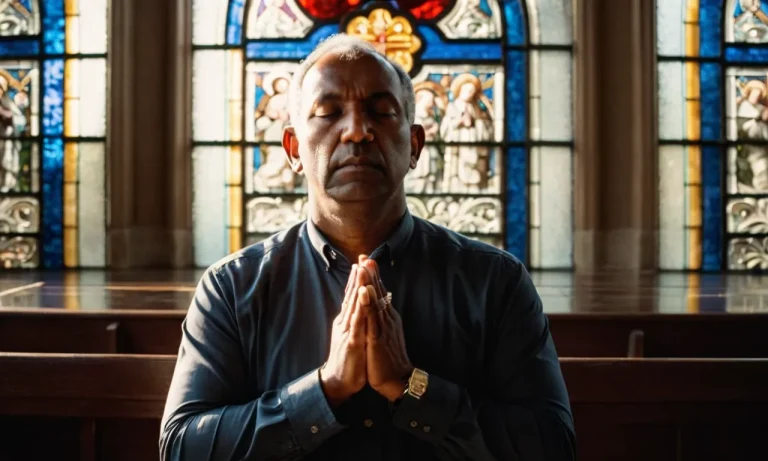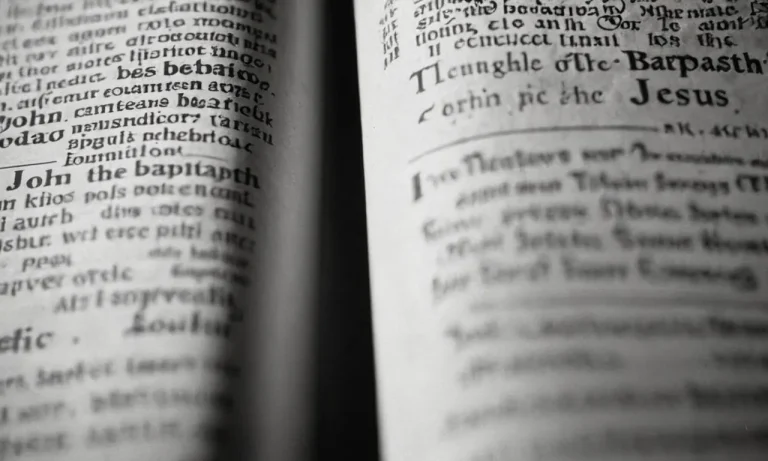What Does The Bible Say About Mixing Races?
The question of whether different races should mix, either in marriage or more broadly in society, has been a controversial one throughout history. In modern times, many believe that all races are equal and that there is no biblical justification for maintaining divisions or restrictions between people of different ethnic backgrounds.
However, others argue that the Bible does prohibit interracial marriages or promote segregation of the races in certain respects. This article will provide a comprehensive overview of the key biblical passages that are cited in this debate over what the Bible says about relations between different races and ethnic groups.
Old Testament Passages on Interactions Between Israelites and Other Groups
Passages Warning Against Intermarriage
The Old Testament contains several passages that warn the Israelites against intermarrying with non-Israelites. For example, in Deuteronomy 7:3-4, Moses instructs the Israelites not to intermarry with the Canaanites, saying “You shall not intermarry with them, giving your daughters to their sons or taking their daughters for your sons, for they would turn away your sons from following me, to serve other gods.”
This passage presents intermarriage as leading to idolatry and religious syncretism. Similarly, Ezra 9-10 describes how Israelites who had intermarried with non-Israelites were called upon to divorce their foreign wives, seen as a purification of Israelite religion and identity.
These texts reflect beliefs that intermarriage would threaten the distinctiveness of Israelite religion and culture.
Descriptions of Separation Between Jews and Gentiles
Several Old Testament texts also reflect practices and beliefs about separation between Jews and Gentiles in ancient Israelite society. For example, Exodus 12 describes instructions for Passover that specify “no foreigner shall eat of the Passover meal.”
Deuteronomy 23:3 states that Ammonites and Moabites were forbidden from entering the assembly of the Lord. These texts point to ritual separation and barriers to full participation in Israelite religion and community for non-Israelites living among them.
The books of Ezra and Nehemiah describe efforts to enforce separation between Jews and Gentiles after the return from Babylonian exile, including prohibitions on intermarriage.
Instances of Interaction Between Jews and Non-Jews
However, the Old Testament also contains examples of positive interactions and integration between Israelites and non-Israelites. For example, Exodus 12:38 says a “mixed multitude” went up with the Israelites out of Egypt.
The Book of Ruth tells the story of the Moabite Ruth who married the Israelite Boaz and became an ancestor of King David. 2 Samuel describes Uriah the Hittite as a loyal soldier in King David’s army. These examples point to ethnic and cultural diversity within ancient Israelite society and examples of cooperation and integration between Israelites and foreigners living among them.
New Testament Teachings on Ethnic and Social Divisions
Jesus’ Ministry Transcending Ethnic Boundaries
Jesus’ ministry reached across traditional ethnic boundaries, bringing together Jews and Gentiles. Jesus preached to the Samaritan woman at the well (John 4), healed the daughter of a Canaanite woman (Matthew 15:21-28), and praised the faith of a Roman centurion (Matthew 8:10-12).
He told the parable of the good Samaritan, making the hero a man from a despised ethnic group (Luke 10:25-37). Jesus broke down barriers of ritual impurity by touching lepers, allowing a hemorrhaging woman to touch him, and letting a sinful woman anoint his feet (Mark 1:40-45, 5:25-34, Luke 7:36-50).
His followers transcended ethnic divisions after Pentecost, uniting different languages and nations (Acts 2).
Teachings in Acts and the Epistles on Inclusion
The early church had to grapple with divisions, as Jewish Christians debated whether Gentile believers needed to follow the Law of Moses. The apostles determined that Gentiles were welcomed into God’s family by faith in Christ without needing circumcision (Acts 15).
Paul taught that in Christ there is neither Jew nor Greek, slave nor free, male nor female, since believers are all one in Christ Jesus (Galatians 3:28). He emphasized that God shows no partiality based on ethnicity, gender, or social status (Romans 2:11).
James taught believers not to show favoritism to the rich or look down on the poor (James 2:1-9). Peter realized that God accepts believers from every nation who fear Him and do what is right (Acts 10:34-35). The barriers that divided people were broken down in Christ.
Paul’s Writings on Unity Within Diversity
Paul used the metaphor of the church as the body of Christ to show how different members with various gifts work together in unity (1 Corinthians 12:12-27). Believers with varied ethnic, social, and religious backgrounds were brought together, with Christ as their unifying head.
Paul exhorted the Corinthians to use their spiritual gifts to serve one another, following the way of love (1 Corinthians 12:31-14:1). To the Galatians, he wrote that spiritual unity was more important than cultural divisions (Galatians 3:26-29).
He reminded believers to clothe themselves in love, which binds everything together in unity (Colossians 3:14). By loving one another, respecting ethnic diversity, and valuing unity in Christ, the church displayed God’s wisdom (Ephesians 3:10).
Interpretations and Applications to Modern Race Relations
View That the Bible Forbids Interracial Marriage
Some interpret certain biblical passages, such as prohibitions against Israelites marrying foreign women (Deuteronomy 7:3), as forbidding interracial marriages. However, most mainstream biblical scholars believe these commands were intended to protect religious purity rather than racial purity.
Perspective That the Bible Supports Integration
Many Christians highlight Bible passages that emphasize spiritual equality across races and ethnicities. For example, Galatians 3:28 declares “There is neither Jew nor Gentile, neither slave nor free, nor is there male and female, for you are all one in Christ Jesus.
“ This seems to support racial integration and equality in Christ.
Additionally, the Bible affirms that all people are made in God’s image (Genesis 1:27), evidencing an intrinsic equality and dignity across humanity. As The Gospel Coalition notes, these ethical principles can inform a biblical view of race aimed at reconciliation and mutual understanding rather than division.
Focus on Spiritual Rather Than Physical Unity
While Scripture calls for spiritual unity across races, some Christians argue this does not necessarily endorse the physical integration of races. They suggest the Bible’s priority is on unity in Christ rather than on racial assimilation or diversity quotas.
The emphasis is on reconciled hearts more than external circumstances.
However, other Christians counter that spiritual unity should naturally lead to openness, understanding, and fellowship between races within churches and society. As theologian John Piper states, the Bible condemns both explicit racism and subtle indifference to unjust barriers dividing races in the church.
Conclusion
In examining the relevant biblical passages, we find evidence that could be used to argue different positions regarding interracial relations. While the Old Testament includes some restrictions and separations between Israelites and other ethnic groups, the New Testament emphasizes the breaking down of such divides through Christ.
There are two major streams of thought on applying these scriptures to modern race relations: one sees the Bible as clearly prohibiting interracial marriage, while the other sees the Bible as promoting integration.
In the end, the core message seems to be that spiritual unity in Christ transcends racial divisions, even if the practical implications for relationships between races remain debated.








